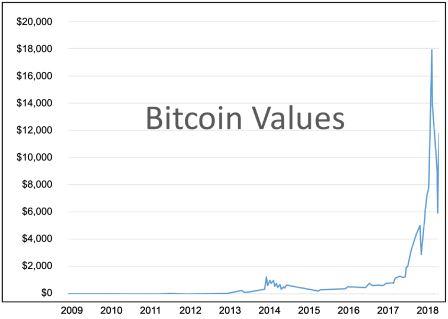

In this Edition
Construction
Management Specialists
111 Pine Street, Suite 1315
San Francisco, CA 94111
(415) 981-9430 (San Francisco office)
6518 Lonetree Blvd., Suite 164
Rocklin, CA 95765
(916) 742-1770 (Sacramento office)
9449 Balboa Avenue, Suite 270
San Diego, CA 92123
(619) 518-5648 (San Diego office)
8538 173rd Avenue NE
Redmond, WA 98052
(206) 571-0128 (Seattle office)
2063 Grant Road
Los Altos, CA 94024
(650) 386-1728 (South Bay office)
7083 Hollywood Blvd., 4th Floor
Los Angeles, CA 90028
(424) 343-2652 (Los Angeles, CA office)
78 Heathervue, Greystones
Wicklow, A63Y997, Ireland
+353 86-600-1352 (Europe office)
www.TBDconsultants.com
In this article we look at microgrids, which can keep your building function when the power grid goes down, and pay you by supplying power to the grid.
Bitcoin has been making the news a lot recently, with its wild gyrations in value, the hacking of some of the cryptocurrency’s exchanges, and concerns about the amount of energy it expends on its ‘mining’ operations, which exceed the energy usage of a number of nations in the developed world. All that might indicate that Bitcoin still has a lot of growing to do, and is itself still under construction. But that wasn’t the intended meaning of this article’s title.
Bitcoin is built on a new technology called Blockchain. With Bitcoin, transactions are bundled together into ‘blocks’ that get added to the Blockchain about once every 10 minutes through a process known as mining. We won’t delve into the ins-and-outs of ‘mining’ here, but the important point is that a block really just represents some form of transaction that is facilitated by the Blockchain technology. That makes the technology applicable to any form of hierarchical or peer-to-peer transaction. Some have described it as the next big thing after the Internet.

Bitcoin was implemented after the crash that led to the Great Recession, and was designed to get around the banks, but now banks, themselves, are starting to use Blockchain technology. The technology has been touted as a way to avoid the middleman, and providing a chronological, secure and verifiable record of transactions. With Bitcoin, the identity of the parties involved is deliberately hidden, but that doesn’t have to be the case. Probably in most cases you would need to know the identities of who you are transacting with, and maybe even know their qualifications. The software can be designed to enable that, by the creation of digital IDs. Blockchain has been adopted by the Australian Securities Exchange to replace its current clearing system, and the technology has been used for the sale of a property without the need for realtors as intermediaries. These are examples of Smart Contracts.
A Smart Contract is a transaction that follows ‘if … then’ rules, and it utilizes Blockchain to record transactions and trigger the responses. Such rules can apply to most things in construction, and in industry in general. For instance, ‘if all materials are delivered to site, then subcontractor gets paid $X’, ‘if all materials have been installed, then subcontractor gets paid $Y’, ‘if installation has been tested and proved correct, subcontractor gets paid $Z’. It is automating business logic and eliminating the middleman, which should speed up activity. Imagine a situation where contractors and subcontractors actually know they are going to get paid promptly on completion of their work. Everything is controlled by an algorithm, with no room for human prejudice, procrastination, or prevarication.
Blockchain doesn’t keep information in one location, but rather each party has a copy of it, that is constantly updated. Effectively, each computer monitors all the rest, making the Blockchain almost impossible to tamper with, because any unauthorized changes will quickly become apparent. Thus, it makes an ideal record of who did what and when on a project, in the event that any dispute arises.
An organization that runs on rules, like those in a Smart Contract, can be seen as a DAO (Decentralized Autonomous Organization), and the teams involved in the construction of a building could form a DAO that would manage the project. It has been suggested that a building itself can be set up as a DAO. Together with the Internet of Things, the DAO, working through its Blockchain-controlled Smart Contracts, would be able to know when maintenance or replacement work was required, and place orders for same; it could take care of regular payment, like insurances and property taxes; and it could ensure rents or other incomes were paid promptly.
There are a number of issue to be worked through, as Blockchain technology comes into more general use. For instance, a Smart Contract is not actually a legal contract, but a piece of software that sets the rules for, and carries out, transactions. But BIM was used before people started writing it in as a contract document. Issues of confidentiality and intellectual property rights need to be addressed, and accounted for. There is also the fact that one party may like using one Blockchain, and another party using another. But again, as with BIM, there are already methods being devised of letting one Blockchain recognize and interact with another. So, we really just need to see who will be the driving force for adoption of Blockchain technology in the construction industry, and that is likely to come from government and other large building owners, since it is largely about compliance.
We have recently seen some dramatic dips in the stock market, and here we look at the causes behind that, and what it might portend for the construction market.
Design consultant: Katie Levine of Vallance, Inc.